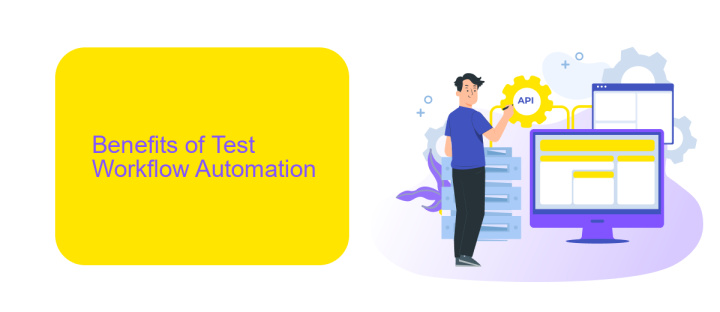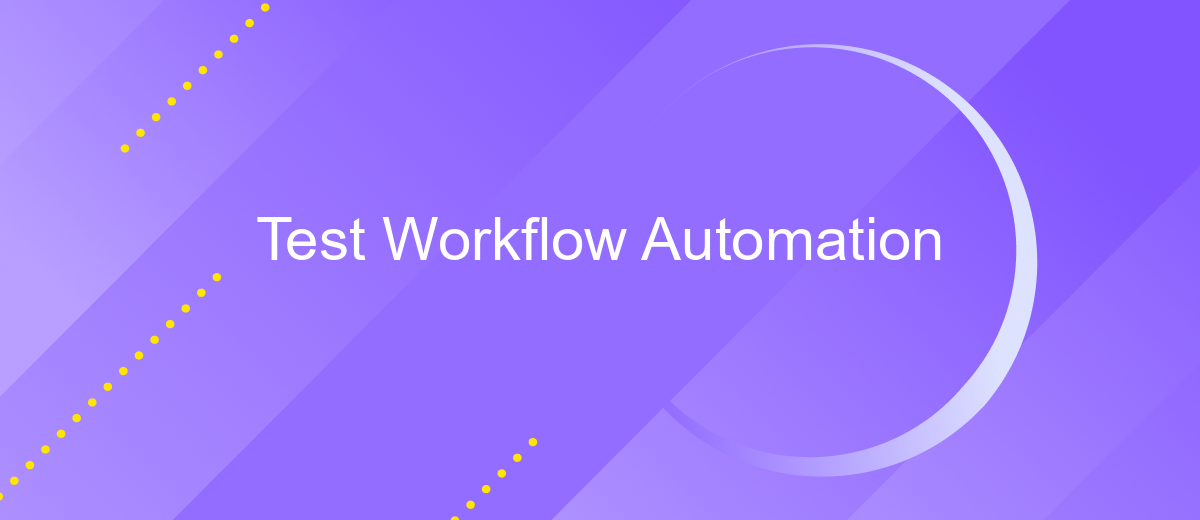Test Workflow Automation
In today's fast-paced digital landscape, test workflow automation has become a crucial element for enhancing efficiency and accuracy in software development. By automating repetitive and time-consuming tasks, teams can focus on more strategic activities, reduce human error, and accelerate time-to-market. This article explores the key benefits, tools, and best practices for implementing test workflow automation in your development process.
Introduction to Test Workflow Automation
Test workflow automation is an essential aspect of modern software development and quality assurance processes. By automating repetitive and time-consuming tasks, teams can improve efficiency, reduce errors, and ensure consistent outcomes. Automation tools and frameworks enable seamless integration with various development and testing environments, streamlining the entire workflow.
- Reduced manual effort and human error
- Increased test coverage and accuracy
- Faster feedback and shorter development cycles
- Consistent and repeatable test processes
- Enhanced collaboration among team members
Integrating automation into your test workflow can be simplified with services like ApiX-Drive, which facilitate seamless connections between different applications and systems. ApiX-Drive allows for easy setup of integrations without the need for extensive coding, enabling teams to focus on more critical tasks. By leveraging such tools, organizations can optimize their test workflows, ultimately leading to higher quality software products.
Benefits of Test Workflow Automation

Test workflow automation significantly enhances efficiency by minimizing manual intervention and reducing the likelihood of human error. Automated workflows streamline repetitive tasks, allowing teams to focus on more strategic activities. This not only accelerates the testing process but also ensures higher accuracy and consistency, ultimately leading to more reliable software releases.
Moreover, integrating automation tools with existing systems can further optimize the testing process. Services like ApiX-Drive facilitate seamless integration between various applications, enabling automated data transfer and synchronization. This reduces the complexity of managing multiple tools and enhances overall productivity. By leveraging such integrations, organizations can achieve a more cohesive and efficient testing environment, leading to faster development cycles and improved product quality.
Types of Test Workflow Automation Tools

Test workflow automation tools are essential for streamlining the testing process, ensuring efficiency, and enhancing productivity. These tools can be categorized based on their specific functionalities and use cases, each serving a unique purpose in the automation landscape.
- Test Management Tools: These tools help in planning, executing, and tracking test activities. Examples include TestRail and Zephyr.
- Continuous Integration Tools: Tools like Jenkins and Bamboo facilitate continuous integration and delivery, automating the build and test process.
- API Integration Tools: Services such as ApiX-Drive enable seamless integration between different applications, ensuring smooth data flow and automated workflows.
- Automated Testing Tools: Selenium and Appium are popular tools for automating web and mobile application testing.
Choosing the right test workflow automation tool depends on the specific needs of your project. For instance, if you require robust API integrations, leveraging a service like ApiX-Drive can significantly enhance your automation capabilities, providing a comprehensive solution for integrating various applications and automating complex workflows.
Implementation and Considerations

Implementing test workflow automation requires careful planning and a clear understanding of the tools and processes involved. The first step is to identify the key components of your workflow that can be automated, such as test case execution, result logging, and reporting. This helps in streamlining the entire testing process and ensures consistency in test results.
Next, you need to select appropriate tools and platforms that support your automation needs. Tools like ApiX-Drive can be particularly useful for integrating various services and automating data flow between them. This can significantly reduce manual effort and improve efficiency.
- Identify automation opportunities in your workflow.
- Select tools and platforms that align with your needs.
- Integrate services using tools like ApiX-Drive for seamless data flow.
- Monitor and adjust the automated processes as needed.
Finally, it is essential to regularly review and update your automation strategies to adapt to changing requirements and technologies. Continuous monitoring and optimization will ensure that your automated workflows remain efficient and effective over time.


Best Practices for Test Workflow Automation
Effective test workflow automation begins with clear and comprehensive test case documentation. Ensure that all test cases are well-defined and cover various scenarios, including edge cases. Consistent and thorough documentation helps in maintaining a robust and scalable test suite. Additionally, prioritize tests based on their impact and frequency of execution to optimize resource allocation and reduce testing time.
Integrating your test automation tools with other systems can significantly enhance efficiency. Utilize services like ApiX-Drive to streamline these integrations, allowing seamless data flow between different tools and platforms. This ensures that test results are automatically updated and accessible in real-time, facilitating quicker decision-making. Regularly review and update your test scripts to adapt to new features and changes in the application, ensuring that your automation framework remains effective and relevant.
FAQ
What is Test Workflow Automation?
Why should I consider automating my test workflows?
What types of tests can be automated?
How do I get started with Test Workflow Automation?
What are some best practices for implementing Test Workflow Automation?
Do you want to achieve your goals in business, career and life faster and better? Do it with ApiX-Drive – a tool that will remove a significant part of the routine from workflows and free up additional time to achieve your goals. Test the capabilities of Apix-Drive for free – see for yourself the effectiveness of the tool.

